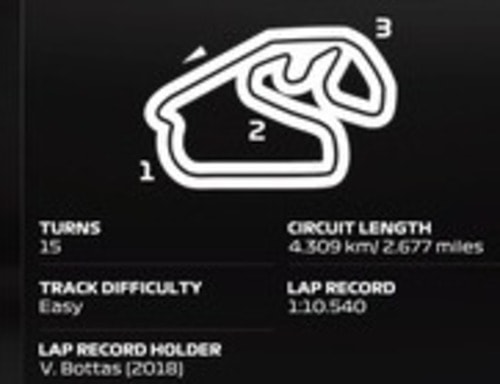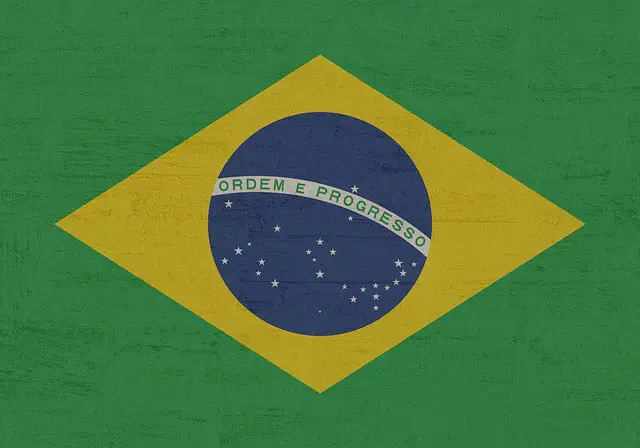The Interlagos track in Brazil has been a fan favourite on the F1 calendar for years, both in real life and on the games. Players love driving round Brazil for league racing especially, and I always look forward to it in my career mode.
It’s also a great track for F1 gaming newbies as it’s a pretty easy track to learn. But it’s also hard to truly master it and find those last few tenths. So it’s got something for everyone.

In terms of corners, Interlagos has a bit of everything, but there is still an emphasis on engine power and straight line speed on this track on the recent games, despite the twisty infield section. Most setups around here run medium downforce on F1 23.
Here’s a general baseline dry race setup for Brazil for a controller user:
- Wings – 25/27 or 28/30
- Diff – 50/55
- Camber – -2.50/-1.00/0.00/0.10
- Suspension – 26-8-6-8-34-37
- Brakes – 100 Pressure/55 Bias
- Tyre pressures – Fronts 22.2/Rears 20.2
This setup is partially taken from the SimRacingSetups YouTube channel Brazil setup, but quite heavily modded for a pad user as he’s a wheel user and the setups don’t translate over well between the two input devices.
As regards wing levels, it’s difficult for me to choose between 25/27 and 28/30, as I had success with both these in career mode. If you’re confident in your pace, 28/30 wings has a nice feel for me at least, even though it might leave you a bit vulnerable on the straights.
More In Depth Setup Considerations
Here’s some additional analysis and tips for setting up a car for Brazil.
Wing levels
I’ve noticed some eSports racers using higher wing levels in the high 20s or even the 30s, but it’s better in many instances to go for lower wing levels when possible on F1 23, especially when racing against the AI who are ridiculously fast on the straights.
Find an optimal wing level for you for single lap pace, and then consider dropping it 2-3 clicks for optimal strategy in the race. Using lower wing levels is over-powered in general on F1 23 and comes back to you in the race, and especially so on tracks like Brazil where you’re on full throttle for a large amount of the lap.
Brazil can be an exception to this though if you’re confident in being able to qualify and race away from the front without needing to battle too much (more on this below).
The advantage of using lower wings on F1 23 (demonstrated)
Wing spacing
When using a pad on F1 23, it’s all about being able to get back on the traction smoothly out of corners. Set the wings too close together, and I find on a controller the car over-rotates and you lose the back end when trying to get back on the throttle.
My default for this game is to set the rear wing 2 clicks higher than the front, and it’s the same for Brazil. 25/27 wings provide decent straight line speed for overtaking/defending. 28/30 feels better to drive but makes it harder to defend on the straights.
Qualifying vs Race setup
This is a tricky one, as for me, using slightly higher wings of 28/30 gave me much better single lap qualifying pace and actually felt more comfortable overall. But you’ll be leaving yourself vulnerable to overtakes running higher wings as we covered above, so it’s up to you.
If you’re confident enough in your pace to pull away from the pack and break the 1 second DRS gap to cars behind, you could consider going for slightly higher wings for a better qualifying result. Brazil can be track where you contradict the “lower downforce” rule above and prioritize single lap pace over straight line speed if you’re confident you’ve got a few tenths per lap over the competition.
But if you do this and end up getting stuck in the pack running higher wings, you might struggle to overtake and defend.
Intermediate Conditions
Wet weather conditions are definitely possible in Brazil. Your dry setup will still work OK in intermediate conditions, and you can add 1-2 clicks of wing if you want for a bit more grip in sector 2.
Full Wet Conditions
When on the blue full wet tyres, you’re basically adding a few clicks to your dry setup, but not as much as on some other tracks. You still need decent straight line speed on that long straight. And as per usual, just soften the suspension and raise the ride height a few clicks for better stability and traction in the wet.
Here would be the full wet controller setup I’d use at Brazil:
- Wings 28/31
- Diff – 50/55
- Camber – -2.50/-1.00/0.00/0.10
- Suspension – 22-7-7-1-37-40
- Brakes – 95 Pressure/55 Bias
- Tyre pressures – Fronts 22.5/Rears minimum
If you’re struggling with stability and traction on the pad, set the rear wing 3 clicks higher than the front to stop over-rotation. You can also go even higher with the wings if you want for more speed in the twisty sector 2, but it may leave you vulnerable on the long pit straight from chasing cars who are using lower wing levels and deploying ERS.
See our guide on converting dry setups to wet setups for more detailed information on this.
Alternative Setup Resources
There’s quite a lot of variety in car setups for Brazil, with wing levels differing quite a lot between players. If you’re wanting to check out some different car setup routes for single lap as well as race pace, and for specific cars, here are some other resources:
- F1laps.com Brazil page– Another car setup forum with pages for every track, and loads of custom setups posted, both TT and race, all cars, all conditions.
- F1gamesetup.com – An even more specialized resource with custom setups, every car and every track, wet and dry weather.
Bonus Tips For Racing Here
Here are some additional considerations and tips for racing at Brazil.
Sprint Race
In career and GP mode seasons, Brazil is the final sprint format weekend on the calendar, following on from the recent Texas and Qatar races. This means the format is different – it’s one practice session, then you’re straight into qualifying for the sprint, with the results of the sprint race determining the grid for the main race on Sunday.
Therefore, you’ve only got one practice session to dial a setup in – choose the Harder tyre allocation before the weekend starts to free up some softs for this session if you want to prioritise qualifying pace for this event.
Also remember to change any engine parts straight away after P1, as you can’t do so after this without incurring a grid penalty. Car setups are also locked as soon as you leave the pits in Qualifying.
Qualifying tyres
If you do go for the Harder tyre allocation to free up some softs to use in P1, be aware this reduces the amount you have in qualifying and the race. If you go down this route, it’s best to use only 2 sets of softs in Qualifying, and save the third set for the race.
Otherwise you’ll have to run on a used set of softs in the main race, which isn’t optimal for traction, pace, and the race start. The tyres are quite durable in Brazil anyway, and you can get 2 good flying laps on a new set of softs, with a cool-down lap in between. So you can get through only using 2 sets of softs (2 flying laps on each) in Quali.
Pit strategy
Tyre degradation doesn’t seem to be particularly high here, but the “undercut” still seems quite powerful. Consider pitting 1-2 laps before your pre-race strategy guide suggests for a strong undercut on cars in front. I just did this on my career mode race in Brazil and regained the lead having lost it, and then just managed the gap from there.

